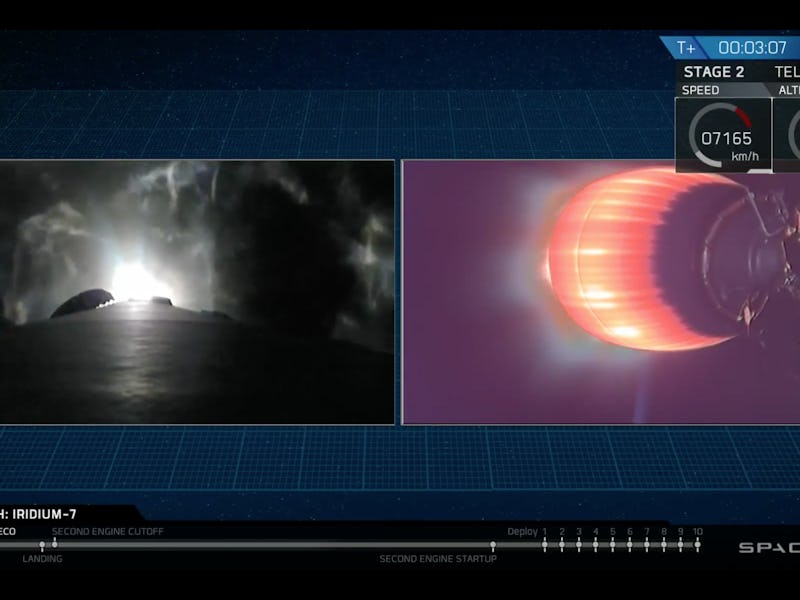SpaceX took a big step to regularly reusing rockets on Wednesday, as the company landed its third Falcon 9 Block 5 on drone ship Just Read the Instructions in the Pacific Ocean. The landing, just four days after another successful landing in the Atlantic Ocean, took place in the worst sea conditions the company has ever seen for recovering a booster.
The mission, which took off from Vandenberg Air Force Base in California at 4:39 a.m. Pacific time, sent 10 Iridium NEXT satellites to join the 55 others in orbit, the seventh mission in a tech upgrade that will see SpaceX launch 75 communications satellites in total. John Insprucker, SpaceX principal integration engineer, said during the live webcast that “sea conditions are fairly rough” and “the worst conditions we’ve ever had for trying to get a first stage on a drone ship.” Six minutes after launch, the three Merlin engines illuminated the titanium grip fins as the booster entered entry burn. Just one-and-a-half minutes later, the booster lit the drone ship on the pre-dawn sea before cutting to darkness, having successfully landed.
The location of the drone ship.
See also: How the SpaceX Drone Ships Got Their Sci-Fi Names
The landing is a key part of SpaceX’s plan to reuse rockets as much as possible, saving the company an estimated $46.5 million of the total $62 million Falcon 9 initial cost. Wednesday marked the 26th successful booster landing out of 32 and the 15th successful sea-based landing. Some of those failures have made for spectacular footage, as Musk shared in a September 2017 compilation video.
The company’s other Wednesday challenge is to save the fairing that protects the cargo on its way to orbit. While SpaceX initially deployed a giant net welded to the back of a ship called Mr. Steven in February, it failed to catch anything. The company upgraded the net to make it four times larger, measuring 0.9 acres. Insprucker noted the Wednesday mission is “an experimental attempt,” as “we’re still learning how to catch fairing out of the air.”
SpaceX’s next mission is set to launch a Merah Putih telecommunications satellite for Telekom Indonesia on August 2 at 1:19 a.m. Eastern time from Cape Canaveral Air Force Station in Florida.
